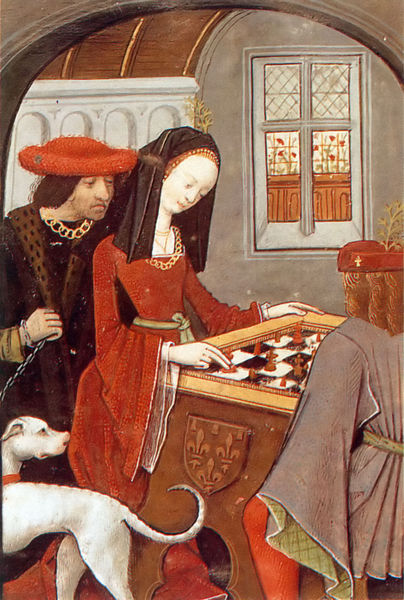Over the past few weeks, we've examined ESCAPE, RELEVANCE, DRAMA, EMOTION, GLITZ, HISTORY, FRANCE, CHATEAUX and LITERARY LINEAGE as reasons to read historical fiction set in sixteenth century France. All of these contribute, in their own way, to our culminating reason...
Reason #10--DIFFERENCE
Trends arise in historical fiction, as they do with most cultural phenomena. A particular book will capture the attention of a significant number of readers, who, having enjoyed what they just read, want more. They start looking for other books that share a similar setting or topic or structure. Writers (who, of course, are readers, too) participate in the trend by creating what the public wants; agents and editors (whose job is to sell books) actively seek out manuscripts that meet those criteria. Within a couple of years (remember, it takes 18+ months from the sale of a manuscript to the appearance of the published book on the shelves), a trend has been established. A significant number of newly published works will feed the craze, even to the point of rehashing characters and plotlines. Eventually, however, readers do tire of the trend and authors run out of material to sustain it. At that point, a new book or topic garners attention and the cycle recommences. Trends are not necessarily sequential; they overlap, differ in length, and vary in detail and emphasis depending on audience and genre. One truth holds, however: it is quite difficult, if not impossible, to predict what the public will desire next, once they've had their fill.
Since I began writing historical fiction, I've witnessed several trends in the genre. Back in the early 2000's, Tudor fiction was all the rage. Inspired by Philippa Gregory's THE OTHER BOLEYN GIRL, published in 2001 and filmed in 2008, this trend focused on marital machinations at Henry VIII's court.
Anne Boleyn was by far the favorite protagonist, but the trend produced countless novels about all of Henry's wives. It expanded to include the Elizabethan court
as well as peripheral characters like Thomas Cromwell.
Eventually, however, writers exhausted the historical material and satiated their readers. Although Tudor-era fiction continues to draw a devoted subset of readers, its widespread appeal dampened and new trends came to the fore.
Overlapping the Tudor trend was that of "marquee characters." This was essentially the writing of fictionalized biographies of historical personages immediately recognizable to the reading public. This trend included novels about Marie Antoinette,
Thomas Jefferson,
and Nefertiti, to name only a few.
For many years, few editors would consider novels featuring fictional characters in a historical setting. They felt that readers wanted both the thrill of recognizing the portrait/name on the cover and the satisfaction of learning more about these famous men and women. Novels that relied on fictional characters as protagonists, no matter how accurate the depiction of historical events in the novel or the historical backdrop against which fictional events played out, were considered less appealing to readers. Biographical fiction can be challenging to write, as the sequence of events in a person's life does not always follow a particularly engaging dramatic arc. Many authors addressed this problem by narrating the famous subject's story from the perspective of a fictional servant or friend. Although biographical fiction will always enjoy a prominent place in the range of historical fiction, readers and publishers have in recent years given warmer reception to fictional protagonists inserted into well-research historical settings.
The most current trend in historical fiction is that of fiction set during World War II. This trend began in the mid-2000's with the publication novels like Marcus Zusak's THE BOOK THIEF.





































































